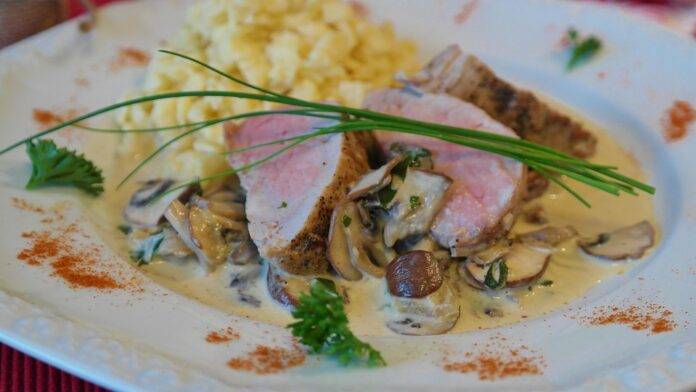Introduction
The global bacon market has evolved significantly over the past few decades, driven by changes in consumer preferences, health trends, and innovative branding strategies. As we look toward the future, understanding the opportunities and challenges that lie ahead is crucial for stakeholders in the bacon industry. This report delves into the current state of bacon branding, exploring market trends, financial insights, and future projections.
The Current State of the Global Bacon Market
As of 2023, the global bacon market is valued at approximately $43.8 billion, with a projected compound annual growth rate (CAGR) of 4.2% from 2023 to 2030. The demand for bacon has surged, particularly in regions such as North America and Europe, where bacon is a staple in breakfast menus and a popular ingredient in various dishes.
Market Segmentation
The bacon market can be segmented based on product type, distribution channel, and geography.
– **Product Type**: The main categories include traditional bacon, turkey bacon, and plant-based bacon alternatives. Traditional bacon accounts for around 75% of the market share, while plant-based options are gaining traction, projected to grow at a CAGR of 12% from 2023 to 2030.
– **Distribution Channel**: The distribution of bacon products occurs through supermarkets, convenience stores, online platforms, and foodservice establishments. Supermarkets dominate the market, accounting for about 60% of total sales.
– **Geography**: North America remains the largest market for bacon, followed by Europe and the Asia-Pacific region. The U.S. bacon market alone is valued at around $20 billion, with a strong demand for artisanal and gourmet bacon products.
Opportunities in Bacon Branding
The future of bacon branding presents numerous opportunities for growth and innovation.
Health and Wellness Trends
Consumers are increasingly health-conscious, leading to a demand for healthier bacon options. Brands that offer products with lower sodium, nitrate-free, or organic certifications are gaining popularity. The rise of turkey bacon and plant-based alternatives reflects this trend, providing opportunities for brands to diversify their product lines.
Artisanal and Gourmet Products
There is a growing market for artisanal and gourmet bacon products. Craft producers who focus on quality, unique flavors, and sustainable sourcing can capture the attention of discerning consumers. This segment is expected to grow, with consumers willing to pay a premium for high-quality bacon.
Global Market Expansion
Emerging markets, particularly in Asia and Latin America, present significant opportunities for bacon brands. As disposable incomes rise and Western dietary habits spread, brands can expand their reach in these regions. Market entry strategies may involve collaborations with local distributors or adapting products to suit regional tastes.
Challenges in Bacon Branding
Despite the opportunities, several challenges could impact the future of bacon branding.
Health Concerns
The increasing awareness of health issues related to processed meats poses a significant challenge. Reports linking processed meats to health risks, including cancer, may deter health-conscious consumers. Brands must navigate these concerns by providing transparency about product ingredients and offering healthier alternatives.
Environmental Sustainability
Sustainability is becoming a focal point for consumers, and the meat industry is under scrutiny for its environmental impact. Brands that do not prioritize sustainability in their sourcing and production processes may face backlash. Implementing sustainable practices, such as using regenerative farming methods or reducing packaging waste, will be essential for future success.
Regulatory Challenges
The bacon industry is subject to various regulations concerning food safety, labeling, and marketing. Changes in regulations can impact production processes and marketing strategies. Brands need to stay informed about regulatory developments and adapt to comply with new standards.
Innovative Branding Strategies
To thrive in the evolving market, bacon brands must adopt innovative branding strategies.
Digital Marketing and E-commerce
As online shopping continues to grow, brands must enhance their digital marketing efforts. Engaging social media campaigns, influencer partnerships, and targeted advertising can help brands reach a broader audience. E-commerce platforms allow brands to sell directly to consumers, increasing brand loyalty and customer engagement.
Storytelling and Authenticity
Consumers are drawn to brands that tell a compelling story. Sharing the history, sourcing practices, and production processes of bacon products can create an emotional connection with consumers. Authenticity in branding fosters trust and encourages customer loyalty.
Collaboration and Co-branding
Collaborations with chefs, restaurants, or other food brands can create unique bacon products that stand out in the crowded market. Limited edition offerings or co-branded products can generate excitement and attract new customers.
Conclusion
The future of global bacon branding is filled with both opportunities and challenges. By leveraging health trends, exploring new markets, and adopting innovative branding strategies, bacon brands can position themselves for success. However, addressing health concerns, environmental sustainability, and regulatory challenges will be crucial to maintaining consumer trust and loyalty. As the bacon industry continues to evolve, stakeholders must remain agile and responsive to changing consumer preferences and market dynamics.
[Read More: The State of the Global Pork, Swine, Pig, and Bacon Industry: A Comprehensive 2025 Report]



